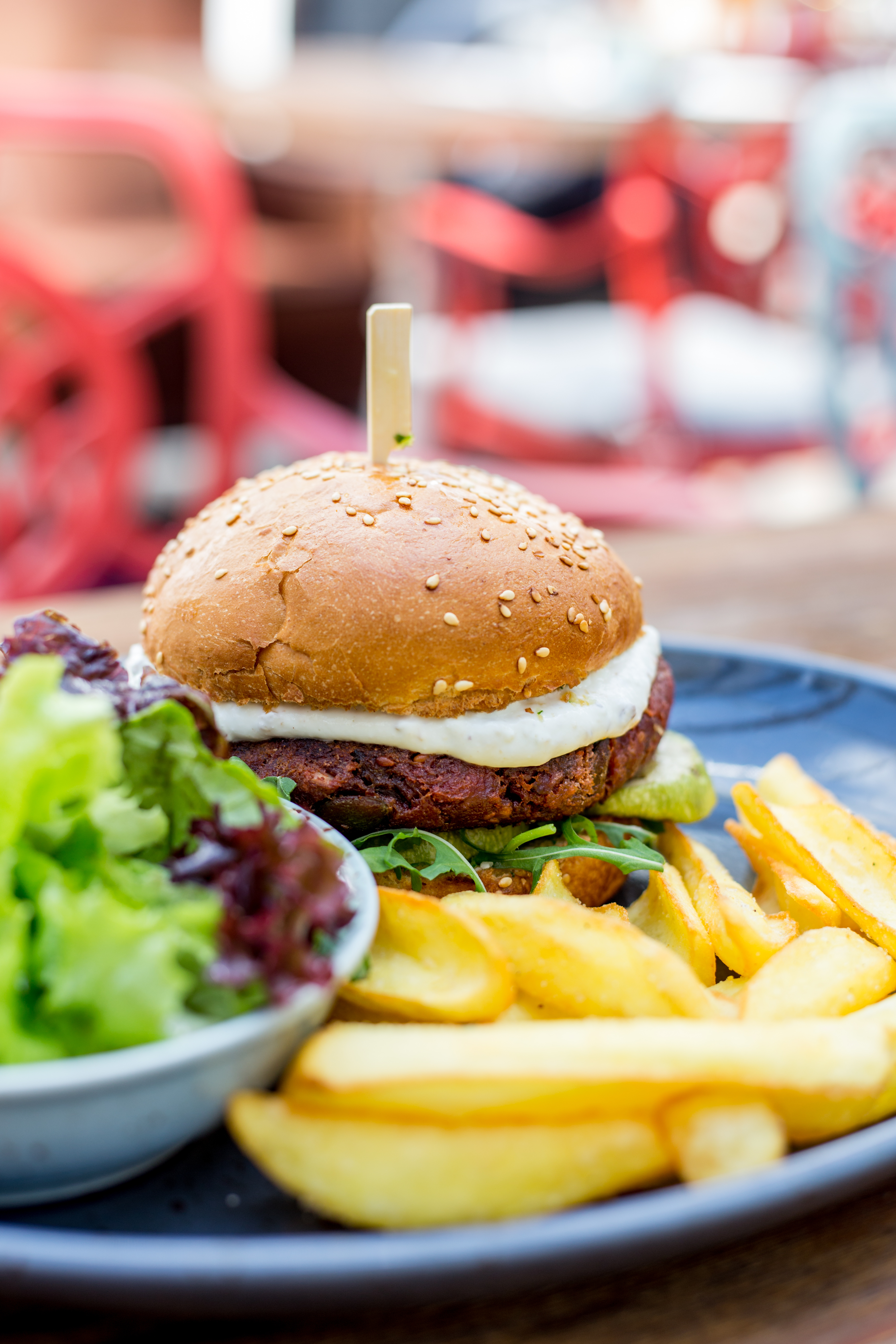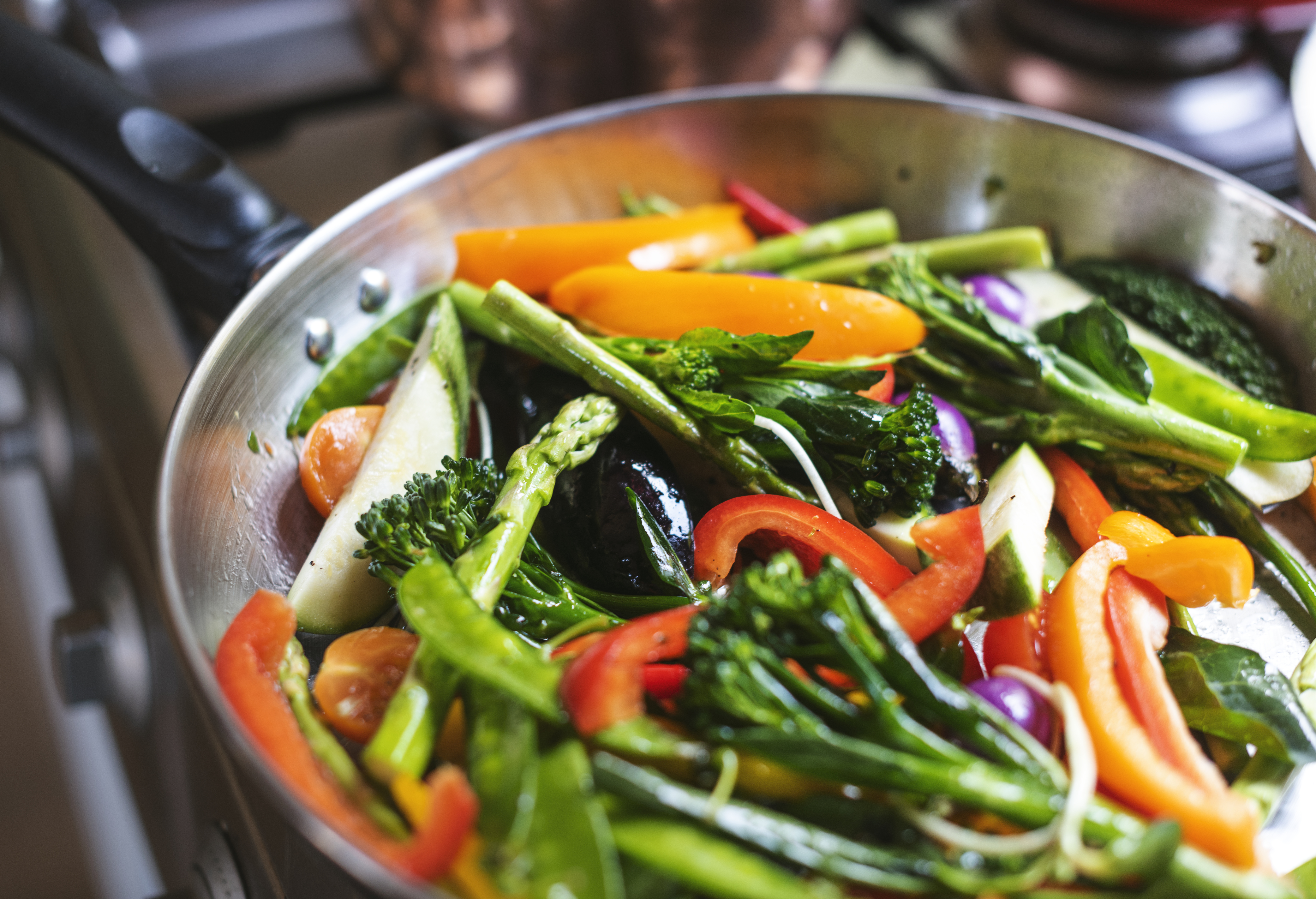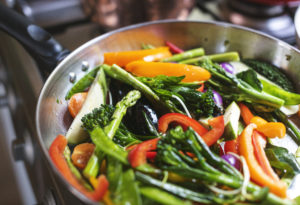
We all love our French fries and hamburgers. Throw in hotdogs and a few beers, and you have yourself a wonderful celebration. However, you have to be careful when consuming an abundance of these foods. Despite these foods being very delicious, too much can lead to serious health problems. In addition, it isn’t always the food item that is severely bad for you but the condiments that you put on them. If you are loading your burger with ketchup, mustard, mayonnaise, and anything else you can get your hands-on, then you are actively making the burger even worse for your health. These are some of the most popular condiments on the market. Some are better with hotdogs, and some are better for French fries, but let’s see which ones are better for your health.
Ketchup
This condiment requires no introduction. Ketchup is the most popular condiment on the market, and people use it for just about anything. Ketchup is made with tomatoes, vinegar, salt, pepper, and a few other spices. It is actually not too high in calorie count at about only 20 calories per tablespoon. In addition, it has no fat content. However, this does not mean that you should go wild and pour mountains of it on your food. Ketchup contains relatively high amounts of salt and sugar. About 4 grams of sugar and 190 milligrams of sodium, which comes from the salt. So, if you are watching your blood pressure, then ketchup may not be the right choice of condiment. Sodium raises your blood pressure and puts a strain on your heart, kidneys, and arteries. You shouldn’t take this with a grain of salt. There are organic options that you can substitute, but I would recommend using ketchup with caution. Here is an estimate of the nutrition facts of ketchup.
Nutrition Facts
Amount Per Tablespoon (17g)
- Calories – 19
- Total Fat – 0g
- Saturated Fat – 0g
- Polyunsaturated Fat – 0g
- Monounsaturated Fat – 0g
- Cholesterol – 0mg
- Sodium – 154mg
- Potassium – 54mg
- Total Carbohydrates – 4.5g
- Dietary Fiber – 0.1g
- Sugar – 3.7g
- Protein – 0.2g
Mayonnaise
Mayonnaise is a condiment that has had quite a bit of controversy over the years. Mayonnaise is made with oil, egg yolk, and either lemon juice or vinegar. Mayo is very high in calories and Fat. One tablespoon contains about 103 calories and 11 grams of Fat. A good portion of this is saturated Fat. Saturated fat causes build up in your arteries. It also raises your LDL levels (bad cholesterol) and lowers your HDL levels (good cholesterol). In addition, it promotes unhealthy weight gain. With this said, you really may want to hold the mayo. However, there are plenty of substitutions for mayonnaise for those of you that cannot live without it. Light mayo contains about one-third the number of calories and Fat of the standard version. Reduced-fat mayo is even less with about 25 calories, 2 grams of fat, and no saturated fat. There is also mayonnaise made with canola or olive oils. These types of mayo are more heart-healthy and are high in monounsaturated fat as opposed to saturated Fat. Monounsaturated Fat has the opposite effect of saturated fats. They lower your LDL levels and raise your HDL levels. This dramatically decreases your risk of heart disease. No matter which version you choose, mayonnaise should always be used in moderation. Here is an estimate of the nutrition facts of mayonnaise.
Nutrition Facts
Amount Per Tablespoon (17g)
- Calories – 100
- Total Fat – 10g
- Saturated Fat – 1.6g
- Polyunsaturated Fat – 6g
- Monounsaturated Fat – 2.3g
- Trans Fat – 0g
- Cholesterol – 6mg
- Sodium – 88mg
- Potassium – 3mg
- Total Carbohydrates – 0.1g
- Dietary Fiber – 0g
- Sugar – 0.1g
- Protein – 0.1g
Mustard
Mustard is another vastly popular condiment on the market. Mustard is actually not as unhealthy as one might assume. Mustard is made from the mustard seed, water, vinegar, lemon juice, salt, and turmeric. In fact, its yellow color comes from turmeric. This condiment provides numerous essential vitamins and healthy fats. It contains omega-3 fatty acids, phosphorus, and magnesium. A tablespoon of mustard contains about 15 calories and no fat. Mustard contains an antioxidant known as glucosinolate. These antioxidants are converted into isothiocyanates, which are compounds containing sulfur. Isothiocyanates help to protect the body against inflammation, cancer cells, and cardiovascular diseases. The turmeric found in mustard is also very beneficial. Turmeric has potent anti-inflammatory properties. It protects against liver damage, improves blood flow, and reduces osteoarthritis pain. To get the best results, you may want to make your own mustard at home. Store-bought mustard can be very processed and can take away from its nutritional value. Here is an estimate of the nutrition facts of mustard.
Nutrition Facts
Amount Per Tablespoon (17g)
- Calories – 15
- Total Fat – 0g
- Saturated Fat – 0g
- Trans Fat – 0g
- Cholesterol – 0mg
- Sodium – 18mg
- Total Carbohydrates – 2.5g
- Dietary Fiber – 0g
- Sugar – 2.5g
- Protein – 0.5g
Barbecue Sauce
Who doesn’t love a nice barbecue? Barbecue sauce is a popular condiment used for grilled meats and vegetables. The condiment is made with vinegar, tomatoes, various seasonings, and sweeteners. The presence of sugar and salt in this sauce makes it one to be wary of. These additions add to the number of calories and sodium in the product. As stated before, too much sodium will raise your blood pressure to unhealthy levels. You should pay close attention to the ingredients in your barbecue sauce and stay clear of the bottles that contain high-fructose corn syrup. High-fructose corn syrup is even sweeter than sugar and much worse for you. It can lead to high blood pressure, unhealthy weight gain, and Type 2 diabetes. If you are going to use barbecue sauce, then look for products that are low in sugar and free of high-fructose corn syrup. Here is an estimate of the nutrition facts of barbecue sauce.
Nutrition Facts
Amount Per Tablespoon (17g)
- Calories – 29
- Total Fat – 0.1g
- Saturated Fat – 0g
- Polyunsaturated Fat – 0g
- Monounsaturated Fat – 0g
- Trans Fat – 0g
- Cholesterol – 0mg
- Sodium – 175mg
- Potassium – 39mg
- Total Carbohydrate – 7g
- Dietary Fiber – 0.2g
- Sugar – 6g
- Protein – 0.1g
Hot Sauce
There are a variety of hot sauces on the market; some spicier than others. Hot sauces are made primarily with hot peppers. There are several different peppers used for hot sauces, but they all have similar properties. They are low in calories, fats, sugars, and carbohydrates. Hot sauces are also high in Vitamin C. Vitamin C raises your metabolism, helps prevent heart disease, boost your immune system, and increases the development of connective tissues. Hot Chile peppers, in particular, are an excellent source of Vitamin A. Vitamin A contains several antioxidants and minerals that have anti-aging and anti-inflammatory properties. It can also help lower your blood pressure. One of the most abundant features of hot sauces is the capsaicin. Capsaicin is what gives hot sauces their heat. Additionally, capsaicin causes cancer cells to basically kill themselves through a process called apoptosis. With this said, hot sauce may be a product you should consider adding to your diet. Here is an estimate of the nutrition facts of hot sauces.
Nutrition Facts
Amount Per Tablespoon (17g)
- Calories – 0
- Total Fat – 0g
- Saturated Fat – 0g
- Polyunsaturated Fat – 0g
- Monounsaturated Fat – 0g
- Cholesterol – 0mg
- Sodium – 124mg
- Potassium – 7mg
- Total Carbohydrate – 0.1g
- Dietary Fiber – 0g
- Sugar – 0.1g
- Protein – 0g
Tartar Sauce
Tartar sauce is a popular condiment used for seafood. It is made with mayonnaise, pickles, parsley, lemon juice, sugar, and spices. Tartar sauce is extremely high in sodium, which in excess is not suitable for your health. There are definitely worse condiments on the market for you to consume, but you can also do much better. In truth, you are better off making your own tartar sauce at home. This way, you can avoid mayonnaise and find a healthier alternative. Here is an estimate of the nutrition facts of tartar sauce.
Nutrition Facts
Amount Per Tablespoon (17g)
- Calories – 30
- Total Fat – 2.5g
- Saturated Fat – 0.5g
- Polyunsaturated Fat – 1.3g
- Monounsaturated Fat – 0.5g
- Cholesterol – 1mg
- Sodium – 100mg
- Potassium – 10mg
- Total Carbohydrate – 2g
- Dietary Fiber – 0.1g
- Sugar – 0.8g
- Protein – 0.1g
Salsa
Chips and salsa are a popular snack for many. Salsa is typically made with tomatoes, lime juice, chilies, onions, and cilantro. Salsa is a good source of Vitamin C and potassium. Vitamin C raises your metabolism, helps prevent heart disease, boost your immune system, and increases the development of connective tissues. Potassium is essential in regulating the body’s blood pressure and mineral balance. Most people do not consume enough potassium, and eating salsa will help with that. Like hot sauce, salsa contains capsaicin. This will help to prevent the growth of cancer cells. Capsaicin also increases the body’s fat-burning capabilities, which will help you to lose weight. Salsa is low in calories and barely has any fat. Just watch out for the sodium, and you should be good to go. Here is an estimate of the nutrition facts of salsa.
Nutrition Facts
Amount Per 100 grams
- Calories – 36
- Total Fat – 0.2g
- Saturated Fat – 0g
- Polyunsaturated Fat – 0.1g
- Monounsaturated Fat – 0g
- Cholesterol – 0mg
- Sodium – 430mg
- Potassium – 270mg
- Total Carbohydrate – 7g
- Dietary Fiber – 1.4g
- Protein – 1.5g
Worcestershire Sauce
In addition to being the hardest condiment to spell and pronounce on our list, Worcestershire Sauce is used in a variety of dishes to add flavors, such as chicken, turkey, beef, chili, pasta, and even salads. With so many possibilities, it seems impossible that it can have any kind of health value, but that isn’t necessarily the case. Worcestershire Sauce has an abundance of Vitamin C in it. This is because of the garlic, onions, cloves, and chili pepper that is used to make it. As stated before, Vitamin C raises your metabolism, helps prevent heart disease, boost your immune system, and increases the development of connective tissues. The sauce also includes the presence of Vitamin K. Vitamin K helps to prevent excessive bleeding as well as the loss of bone tissues. This can be very beneficial to women in reducing the amount they bleed during their menstrual cycles. Anchovies are another key ingredient in making Worcestershire sauce. Anchovies poses an abundance of niacin, which aids in digestion. Worcestershire sauce is definitely worth adding to your meals. Here is an estimate of the nutrition facts of Worcestershire sauce.
Nutrition Facts
Amount Per Tablespoon (17g)
- Calories – 13
- Total Fat – 0g
- Saturated Fat – 0g
- Polyunsaturated Fat – 0g
- Monounsaturated Fat – 0g
- Cholesterol – 0mg
- Sodium – 167mg
- Potassium – 136mg
- Total Carbohydrate – 3.3g
- Dietary Fiber – 0g
- Sugar – 1.7g
- Protein – 0g
Soy Sauce
Soy sauce is made by fermenting soybeans and wheat. It is high in salt and provides 38 percent of the Recommended Daily Intake (RDI). Anything high in salt is also high in sodium. You want to stay away from products high in sodium if you need to be watching your blood pressure. Soy sauce is also known to be high in Monosodium glutamate (MSG). This is a flavor enhancer that can be found in many foods. MSG often causes headaches, weakness, and heart palpitations after consumption. I assume these aren’t feelings that you want on the daily. People with wheat or gluten allergies should also stay clear of soy sauce. Being that it is made from wheat, you can see how this may be problematic. However, even for those without allergies, soy sauce should be consumed very lightly. Here is an estimate of the nutrition facts of soy sauce.
Nutrition Facts
Amount Per Tablespoon (17g)
- Calories – 9
- Total Fat – 0.1g
- Saturated Fat – 0g
- Polyunsaturated Fat – 0g
- Monounsaturated Fat – 0g
- Cholesterol – 0mg
- Sodium – 879mg
- Potassium – 70mg
- Total Carbohydrates – 0.8g
- Dietary Fiber – 0.1g
- Sugar – 0.1g
- Protein – 1.3g
Sweet Relish
Sweet relish is a popular condiment for hamburgers and hotdogs. Relish is made with pickles, onions, bell peppers, salt, sugar, and various spices. While relish is low in calories and fat; it is high in sugar and sodium. Relish also contains some Vitamin C content, which is good. However, compared to the sodium and sugar content, it isn’t a big win. We have already spoken about all the risks involved in consuming too much sodium. On the other hand, sugar increases the risk of heart disease as well as unhealthy weight gain. There are healthier versions of relish on the market, but the more popular ones should be used with caution. Here is an estimate of the nutrition facts of sweet relish.
Nutrition Facts
Amount Per Tablespoon (17g)
- Calories – 20
- Total Fat – 0.1g
- Saturated Fat – 0g
- Polyunsaturated Fat – 0g
- Monounsaturated Fat – 0g
- Cholesterol – 0mg
- Sodium – 122mg
- Potassium – 4mg
- Total Carbohydrate – 5g
- Dietary Fiber – 0.2g
- Sugar – 4.4g
- Protein – 0.1g
Closing Thoughts
All of these nutrition facts are estimates. Depending on the brand that you choose they may slightly vary. It is always a good idea to check the ingredients listed on the label of the products that you are purchasing. There are definitely brands that are worse than others. French fries and hamburger are already unhealthy for you to begin with. There is no need to make them even worse. Remember, a moment on the lips but forever on the hips. Try eating your burger with only mustard and your french fries without ketchup and see how you like. It might not be as bad as you think.


